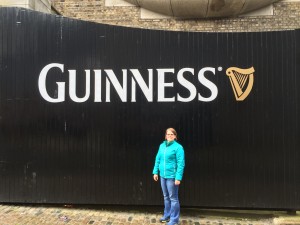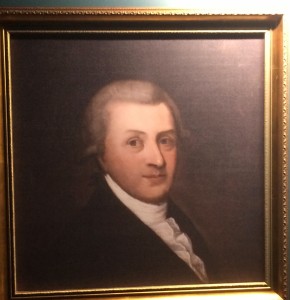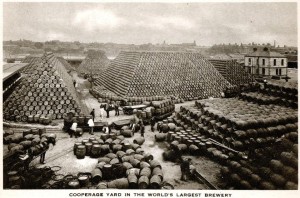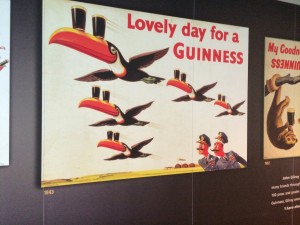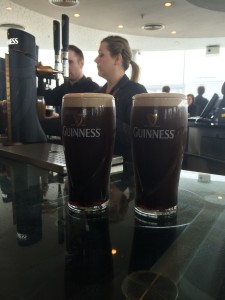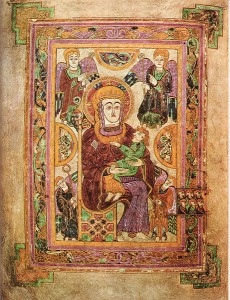 The Book of Kells represents an Irish and cultural treasure.
You will find the book in the Old Library of Trinity College, Ireland’s oldest university.
The Book of Kells represents an Irish and cultural treasure.
You will find the book in the Old Library of Trinity College, Ireland’s oldest university.
Tim and I made our pilgrimage to Trinity College to see the Book of Kells on our second day in Dublin.
Brief History of the Book of Kells
A group of Irish monks cloistered at St. Colum Cille monastery on the island of Iona penned the 4 gospels contained within the Book of Kells.
In 806, a Viking raid forced the Columban monks to relocate to a new monastery at Kells, County Meath. It is unknown whether they had started their gospel book before or after this raid.
The monks killed 185 calves to create the 340 vellum folios they need for their book. On those vellum pages they transcribed 4 gospels in Latin from the Vulgate text using swan-quill pens.
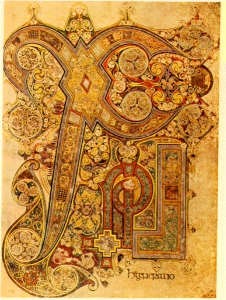 Scholars, Catholics, and book lovers celebrate this book for the highly colorful and ornate artwork that the monks used to commemorate the text.
Scholars, Catholics, and book lovers celebrate this book for the highly colorful and ornate artwork that the monks used to commemorate the text.
For nearly 8 centuries, the Book of Kells sat atop the high alter of the monastery church at Kells. A monastery priest read from the book during special masses.
In 1654, Oliver Cromwell’s Protestant forces approached the Kells monastery. Fearing that the army might find and destroy this treasure, someone smuggled it out of the monestary and took it to Dublin for safe keeping.
Trinity College came into possession of the book sometime between 1654 and the mid-19th century, when the college first placed the book on display.
In 1953, book conservators rebound the book into 4 volumes to help with its continued preservation.
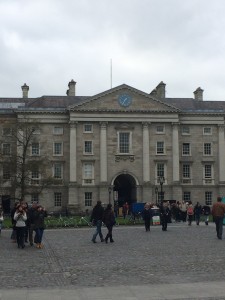 Brief History of Trinity College
Brief History of Trinity College
Queen Elizabeth I founded Trinity College by royal charter in 1592.
Elizabeth established the college to promote a Protestant way of thinking about God.
The most picturesque buildings of the Trinity College campus date to the early to mid-eighteenth century, a time of political stability in Ireland.
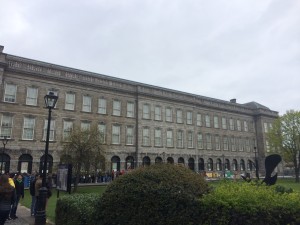 The Irish Parliament commissioned the construction of several new buildings for the college during the eighteenth century. The first structure Parliament built was a new library (1712-1732).
The Irish Parliament commissioned the construction of several new buildings for the college during the eighteenth century. The first structure Parliament built was a new library (1712-1732).
Parliament followed the library with several other buildings, all of which embodied a classical, romanesque appearance: the Printing House (1733-1734), the West Front (1752-1759), the Dining Hall (1760-1765), and the Provost’s House (1759-1761).
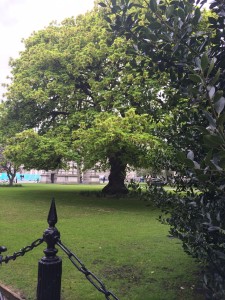 Built on marshy land, many of these buildings proved prone to flooding. Our student tour guide informed us that the 2 large trees standing in the college green helped to stop the flooding. Although planted as decoration, the 2 trees take enough water out of the land to even out the water table.
Built on marshy land, many of these buildings proved prone to flooding. Our student tour guide informed us that the 2 large trees standing in the college green helped to stop the flooding. Although planted as decoration, the 2 trees take enough water out of the land to even out the water table.
The Old Library, home of the Book of Kells, is one of the principal buildings that the trees helped save from frequent flooding.
Old Library Long Room, Trinity College
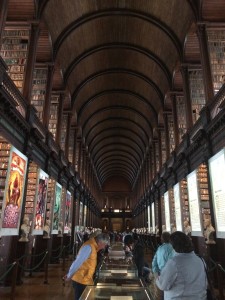 After viewing the Book of Kells, the exhibit directs visitors into the Library’s famed Long Room.
After viewing the Book of Kells, the exhibit directs visitors into the Library’s famed Long Room.
As you can see from the pictures, the room is quite impressive.
The Long Room houses some of the Library’s founding book collections.
A second library stores many of its more contemporary collections, although the majority of the College’s 5 million volumes are housed in an off-campus storage facility.
Trinity College has been a copyright library since 1801, a privilege that entitles it to 1 copy of each book published in Ireland and the United Kingdom.
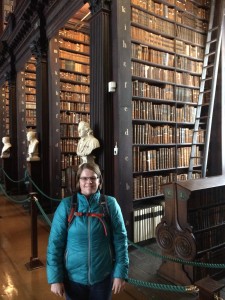 Conclusion
Conclusion
If you love books, art, and eighteenth-century architecture, then you must see the Book of Kells and the Old Library at Trinity College.

